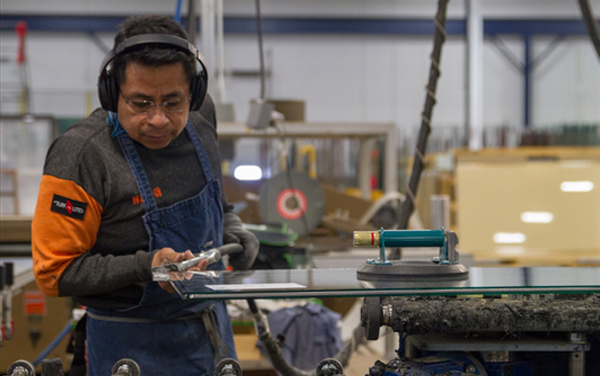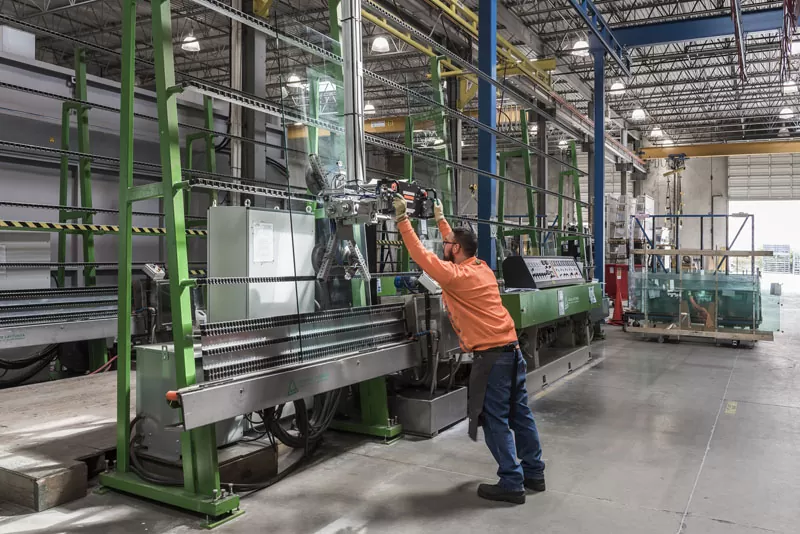
Glass
Fabrication
Glass fabrication is the process of transforming raw glass materials into various finished products, including glass sheets, windows, mirrors, glassware, and architectural elements. Glass fabrication involves cutting, shaping, and processing glass to meet specific design, functional, and safety requirements.
Types of Glass Fabrications
Flat Glass: Used in windows, mirrors, and glass partitions.
Safety Glass: Tempered and laminated glass used in safety applications.
Specialty Glass: Includes coloured, textured, frosted, and stained glass for decorative purposes.
Low-E Glass: Coated with a low-emissivity layer to improve energy efficiency.
Acoustic Glass: Designed to reduce sound transmission for noise control.

Key Fabrication Processes
Cutting
Glass sheets are cut to size using tools such as glass cutters or computer-controlled cutting machines.
Edging
The sharp edges of cut glass are smoothed and beveled for safety and aesthetics.
Tempering
Heat treatment process that strengthens glass and increases its resistance to breakage.
Laminating
Combines multiple glass layers with an interlayer to create shatter-resistant laminated glass.
Double Glazing
Combines two or more glass panes separated by an insulating spacer for improved energy efficiency.
Decorative Processes
Techniques like etching, sandblasting, and staining are used to create decorative patterns and textures.
Bending
Glass can be heated and bent to form curved or custom shapes.
Applications

Architectural Glass: Used in windows, doors, facades, skylights, and interior partitions.
Automotive Glass: Windshields, windows, and mirrors for automobiles.
Glassware: Includes drinking glasses, vases, and decorative glass objects.
Furniture: Glass tabletops, shelves, and cabinets.
Electronics: Glass substrates for displays, touchscreens, and solar panels.
Art & Decor: Stained glass windows, glass sculptures, and decorative glass elements.
Maintenance & Safety
Regular cleaning and maintenance of glass products help maintain their appearance and performance. Safety is a top priority in glass fabrication, especially for applications like tempered and laminated glass.
Glass fabrication is a versatile process that caters to a wide range of applications and industries. From architectural elements to decorative art pieces and functional glassware, it plays a crucial role in shaping the way we interact with and experience glass in our daily lives. Understanding the processes and applications of glass fabrication is essential for designing, specifying, and maintaining glass products effectively.